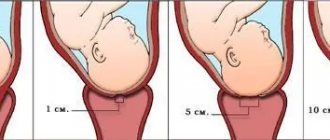Cervical cancer is a malignant tumor that goes through 4 main stages in its development. Depending on the stage, a personalized program for treating cervical cancer abroad is developed, allowing you to obtain the maximum positive result.
It should be noted that not all countries have the opportunity to detect oncology at an early stage, when treatment is most successful. The most effective treatment for cervical cancer is in Israel, Germany and other countries with a high level of medical development.
Definition
Cervical cancer is a lesion of the walls of this organ by malignant cells, as a result of which healthy tissue is replaced by fibrous tissue. This pathology in its final stages is characterized by a low survival rate. The development of the tumor is difficult to predict, since it is characterized by both passive and aggressive forms of development.
Clinical picture
Lack of appetite
In the first stages of cervical cancer development, there are no characteristic symptoms. A doctor can diagnose the disease during a routine examination. Many women live and do not suspect that they are developing cancer.
There are general symptoms that indicate malignant processes in a woman:
- lack of appetite;
- the body is constantly weakened;
- the woman gets tired quickly and feels lethargic;
- body temperature parameters are within 37-37.50C;
- vaginal discharge accompanied by an unpleasant odor;
- the menstrual cycle is disrupted;
- bleeding after sexual intercourse;
- there is a change in menstrual flow.
Symptoms of stage 3 cervical cancer cannot be ignored, because they are clearly manifested. Moreover, when the tumor begins to progress, cancer cells affect not only the uterus, but also nearby organs and tissues. The bladder, pelvic area, and large intestine are affected.
At stage 3, cancer in women is accompanied by some symptoms, in addition to those listed above:
- Extremities are severely swollen.
- Painful sensations appear in the lower abdominal cavity.
- The process of urination and defecation are disrupted.
The prognosis depends on numerous factors. But medical statistics show that the survival rate for this pathology is no higher than 35%. Qualified specialists help you get high and effective results. They recommend timely examination and treatment. It is necessary to stop the development of cancer.
Classification
Stage three cervical cancer is characterized by certain symptoms, which distinguish 3 degrees of the disease:
- 3A. It is characterized by the localization of a malignant neoplasm in the pelvic area and the upper third of the vaginal walls. At this degree, the pathological process does not involve other structures of the genital organ. Treatment carried out at this stage has positive results in 60% of cases.
- 3B. It is characterized by an increase in the activity of tumor growth in a large area of the pelvis and in the lower part of the vaginal walls. In this case, the urinary system is not affected. The survival rate for stage 3B disease is only 42%.
- 3B . At the last stage of its development at stage 3, the formation completely affects the tissues of the small pelvis and organs of the urinary system, including the kidneys. Kidney damage is accompanied by the development of severe hydronephrosis. Treatment in this case has a disappointing prognosis. Only 30% of patients survive.
Symptoms of early stages of cervical cancer
Symptoms of precancerous conditions may vary or be absent altogether. If treatment is carried out at this stage, the risk of tumor development can be significantly reduced. Therefore, it is recommended to undergo regular preventive examinations with a gynecologist.
At stage 1, survival rate is about 100%. In most cases, tumor development is not accompanied by complications, and reproductive function is preserved. There is a risk of relapse, so after healing from the pathology, a woman needs to undergo regular examinations.
In contrast to grade 1, pathologists in this case begin to notice characteristic symptoms:
- causeless bleeding;
- pain in the pelvic and pubic area;
- discharge;
- disruption of the usual course of the menstrual cycle.
Symptoms
The presence of a malignant lesion of the cervix can be detected by the appearance of the following symptoms:
- abnormally rapid weight loss;
- constant drowsiness and lethargy;
- lack of appetite;
- rapid and excessive fatigue;
- increase in body temperature to subfebrile levels. In this case, the temperature can change its value several times during the day;
- the appearance of regular intermenstrual heavy bleeding;
- pain during sexual intercourse;
- discharge mixed with leucorrhoea and an unpleasant odor;
- disruption of the menstrual cycle and changes in the nature of discharge.
Recipes for treating cancer with wormwood and iron. Detailed description of preparation. Signs of the diffuse form of uterine adenomyosis are listed in this article.
Diffuse large cell lymphoma and its stages according to https://stoprak.info/vidy/nexodzhkinskie-limfomy/diffuznaya-v-krupnokletochnaya.html link.
When the urinary system is affected, swelling and rare urination are observed. Also, the occurrence of sharp short-term pain localized in the lower abdomen is characteristic.
Diagnostics
Often, the symptoms of the early stage of the disease can be confused with the general symptoms of the disease of a given organ, therefore, to confirm the diagnosis, a number of specific research methods are used:
- blood biochemistry. Designed to detect disorders in the composition of the blood. The presence of cancerous pathology in this case is primarily revealed by a decrease in the amount of iron;
- inspection using a mirror. It is carried out to study the structure of the walls of the uterus and identify oncological formations;
- colposcopy. Intended for bimanual examination and similar procedures in which bleeding may occur;
- diagnostic tests . Help determine the quality of the affected tissue and the degree of tumor growth;
- strokes. They can help identify disturbances in the vaginal microflora;
- bimanual examination of the vagina. When used, it is possible to identify seals that are not visible to the eye;
- biopsy. Designed to identify the type of cancer cells, as a result of which the correct treatment will be prescribed;
- rectal-vaginal examination. Allows you to determine the form of cancer and examine the degree of uterine mobility;
- rectal-abdominal-wall examination. Designed to determine the condition of the uterine sacral ligaments and identify infiltration of the walls.
How to cure the disease
It must be said that cancer is quite difficult to treat. At this stage, specialists easily diagnose the disease, since research data and examination allow them to obtain a complete clinical picture. At stage 3, various treatment methods are used, all of which are aimed at reducing the tumor and eliminating pain.
One of the most important diagnostic methods for stage 3 is a biopsy. Using this study, it is possible to obtain data on the histological structure of the tumor and determine the extent of the process. A biopsy can determine how healthy tissue responds to cancerous changes in the body.
Another mandatory diagnostic method is cytological studies (smears are taken from the patient’s vagina). This allows the specialist to make an accurate diagnosis. Most often, this method is used in the early stages. At the third stage, it is also necessary, as it confirms the diagnosis.
Treatment during this period of the disease depends on how severely the organs are affected. In most cases, doctors recommend completely removing the uterus and lymph nodes only at the primary stage of the disease.
Cervical cancer is treated with radiation therapy or chemotherapy. Basically, at this stage only complex treatment is used. It is most effective for regional metastasis.
As for the methods themselves, the first and most important is radiation therapy. For the treatment of cervical cancer at the penultimate stage, remote gamma therapy is used with a single dose of 2 grays.
The next method, which is combined with the previous one, is chemotherapy. It uses special cytostatic drugs. This allows you to increase the level of radiation exposure and reduce radiation doses. Many experts note that the combination of these two methods is quite poorly tolerated by people, as it can cause side effects.
And another effective method is immunotherapy, which is aimed at increasing the protective functions of the female body. Also, the use of this method allows you to activate antitumor mechanisms.
Therapy
At stage 3 of the development of this pathology, combined treatment is carried out, including chemotherapy, radiation and immunotherapy. Surgical intervention at this stage of tumor formation is effective in isolated cases.
When should menstruation begin after abdominal surgery to remove uterine fibroids of any stage. We will discuss the symptoms and treatment of stomach tumors here.
Ewing's sarcoma: https://stoprak.info/vidy/kostej-i-myagkix-tkanej/bones/sarkoma-chto-eto-za-bolezn-i-kakie-est-puti-izlecheniya.html what kind of disease is this, photo , treatment, prognosis.
Radiation therapy
To treat the pathology, combined radiation therapy is used, which includes external and intracavitary irradiation.
Remote irradiation is carried out in 2 stages. At stage 1, the entire volume of the small pelvis is irradiated, directly to the abdominal aorta. At the second stage, a regional group of lymph nodes is irradiated . Often, 2-fold irradiation of nodes with a dosage of up to 48 GR is prescribed.
This procedure is carried out 5 times a week , after which they take a break. After a break, intracavitary therapy is prescribed. Intracavitary irradiation is a targeted effect of gamma rays on the neck of an organ. To do this, a special tube is inserted into the vagina through which X-rays are delivered.
It is carried out no more than 3 times a week.
Typically, treatment includes several courses of radiation therapy. Today, this technique is the most effective for stage 3 cancer localized on the cervix. High-dose radiation gives results in 60% of cases.
Chemotherapy
Chemotherapy is used only if the tumor is highly differentiated. In other situations, chemotherapy treatment has only a slight positive effect. This is explained by the peculiarities of the blood supply to the pelvic organs.
When tissue is damaged, blood flows poorly to the uterus along with drugs, only in small quantities, which means the therapeutic effect is minimized. Most often, chemotherapy acts as a complementary treatment, which uses the following drugs:
- Paclitaxel. Used intravenously once a day;
- Cisplatin. It is also used intravenously 2 times a day.
The drugs are administered over 2 or 5 days , depending on the degree of damage. The course of treatment includes several such procedures, which are carried out at intervals of 3 weeks. In the last stage of stage 3, drugs are prescribed a month before radiation therapy with use once a week.
Statistics showed that the number of survivors who received chemotherapy in combination with radiation was 58%.
Immunotherapy
Therapy of this nature is used only as a complementary and supportive technique. It involves the use of high-dose interferon, which increases the protective functions of the immune system and provokes increased functioning of the liver, as a result of which the body’s overall resistance to cancer increases.
Dosages for each case are set individually, depending on the general condition of the body. Immune therapy is prescribed after the combined effects of radiation and chemotherapy. As a rule, it is carried out in a single course without including intervals.
The use of immunotherapy generally does not affect the prognosis immediately after treatment. But, increasing immunity by 27% reduces the risk of developing primary relapses.
Specifics of treatment for cervical cancer depending on stage
Stage 0 treatment:
- conization - removal of pathological tissue of the cervix;
- cryodestruction – freezing of pathological cells using liquid nitrogen;
- laser surgery;
- surgical removal of a precancerous tumor;
- internal irradiation - indicated for patients who cannot undergo surgical treatment.
Stage 1 treatment:
- conization of cervical tissue;
- radical hysterectomy with removal of lymph nodes;
- total hysterectomy, in some cases also removal of appendages;
- internal irradiation;
- combined internal and external irradiation;
- chemotherapy;
- combination of radiotherapy and chemotherapy;
Stage 2 treatment:
- internal and external radiation + chemotherapy;
- cryotherapy;
- radical hysterectomy with removal of lymph nodes + several courses of chemotherapy;
- radical hysterectomy with removal of lymph nodes;
- photodynamic therapy - a special drug is injected directly into the tumor, after which laser treatment is prescribed.
Stage 3 treatment:
- surgical intervention, the tactics of which depend on the degree of damage to neighboring structures;
- a combination of internal and external radiation in combination with chemotherapy treatment;
- photodynamic therapy.
Stage 4 treatment:
At an early stage of the development of metastases, radiation and several courses of chemotherapy are prescribed;
At later stages, treatment is aimed at alleviating the patient’s condition and improving her quality of life.
In this case, the following may be prescribed:
- palliative radiation;
- chemotherapy drugs.
It is important to note that the most effective treatment is carried out in foreign clinics. Thus, in Israel, all medical centers, private and public, are equipped with an advanced diagnostic procedure that makes it possible to identify mutated cells during the early development of oncology. Thus, the chance of a favorable treatment outcome increases significantly. In addition, you can get vaccinated against the disease, which in Israel is considered mandatory for girls who have reached the age of 13-14 years.
If we talk about prices for treatment, then until diagnosis is carried out and the stage of oncology is determined, it is not possible to accurately calculate the cost of cancer treatment abroad. However, when you contact the coordinator of our website, you can get acquainted with the prices of individual procedures. In any case, the program for diagnosing and treating cancer in Israel is much cheaper than in Western European countries.
Forecast
The main difference of this stage is that the complex treatment provided is effective in 60% of cases. Moreover, in the first year after treatment, 31% experience relapses. The maximum effect can only be achieved using high doses of therapy.
If radiation exposure is used as a single independent treatment method, the survival rate is reduced to 45% . Stage 3 is characterized by high mortality, because the organs of the urinary system are involved in the pathological process.
In this situation, 5% of the total number of patients die from complications localized in these organs. The results of treatment will primarily be influenced by the size of the tumor. If the lesion is 15 centimeters in diameter, only 40% of patients will have positive results for five-year survival.
If the main growth is within 7 centimeters, then the probability of continued life is 60%. But, despite the successful outcome of therapy, in most cases, relapses occur, which are explained by the peculiarities of radiation exposure.
In some cases, after therapy, the remaining active cancer cells begin to grow with renewed vigor, metastasizing to adjacent organs and tissues. In this case, the presence of such metastases is observed in 70% of patients
Treatment methods
Radiation therapy for uterine cancer
Therapy is determined by the doctor. First, you need to find out how far the disease has spread and whether it has affected nearby tissues and organs. Many experts are of the opinion that surgery should be performed at an early stage of cancer development. Remove not only the malignant tumor, but also the uterus and lymph nodes. In this case, the patient’s chances of survival are significantly increased.
Treatment for third-degree dysplasia is aimed at stopping the growth and development of malignant cells. But positive results can only be obtained after chemotherapy and radiation. At the penultimate stage, doctors adhere to a complex effect on the woman’s body. Several methods are used to combat pathological processes.
Radiation therapy
The most effective treatment that gives positive results is combined with the use of chemicals. This method of therapy is considered by specialists first of all, because surgical intervention at stage 3 of cervical cancer is impossible.
Chemotherapy
Treatment involves the use of special cytostatic medications. In most cases, chemotherapy is carried out together with radiation. Despite the high survival rate after the procedure, there is a risk of a large number of side effects.
Immunotherapy
Treatment is aimed not only at fighting cancer. The main goal of immunotherapy is to increase the body's defenses in order to activate antitumor mechanisms.
After the doctor has diagnosed stage 3 cervical cancer, he prescribes treatment. Many patients encounter difficulties during therapy, which gives poor prognoses for the future. Women lose hope and give up. It is difficult for doctors to say how long a patient has left to live. It all depends on the stage of development of pathological processes and the individual characteristics of each woman. The structure of the neoplasm matters.
Carcinoma in women at stage 3 is difficult to treat, so qualified specialists recommend not skipping routine examinations with a gynecologist. This is especially true for women who have a high predisposition to developing cancer.
Surgery for such a disease is not prescribed for patients. This is explained by the fact that the tumor has grown deep into the tissue and spread to healthy areas. The affected areas increase in size and nothing can be done about them. Qualified doctors do not recommend surgery at the penultimate stage of pathology, arguing that the procedure is no less dangerous than the disease itself.










